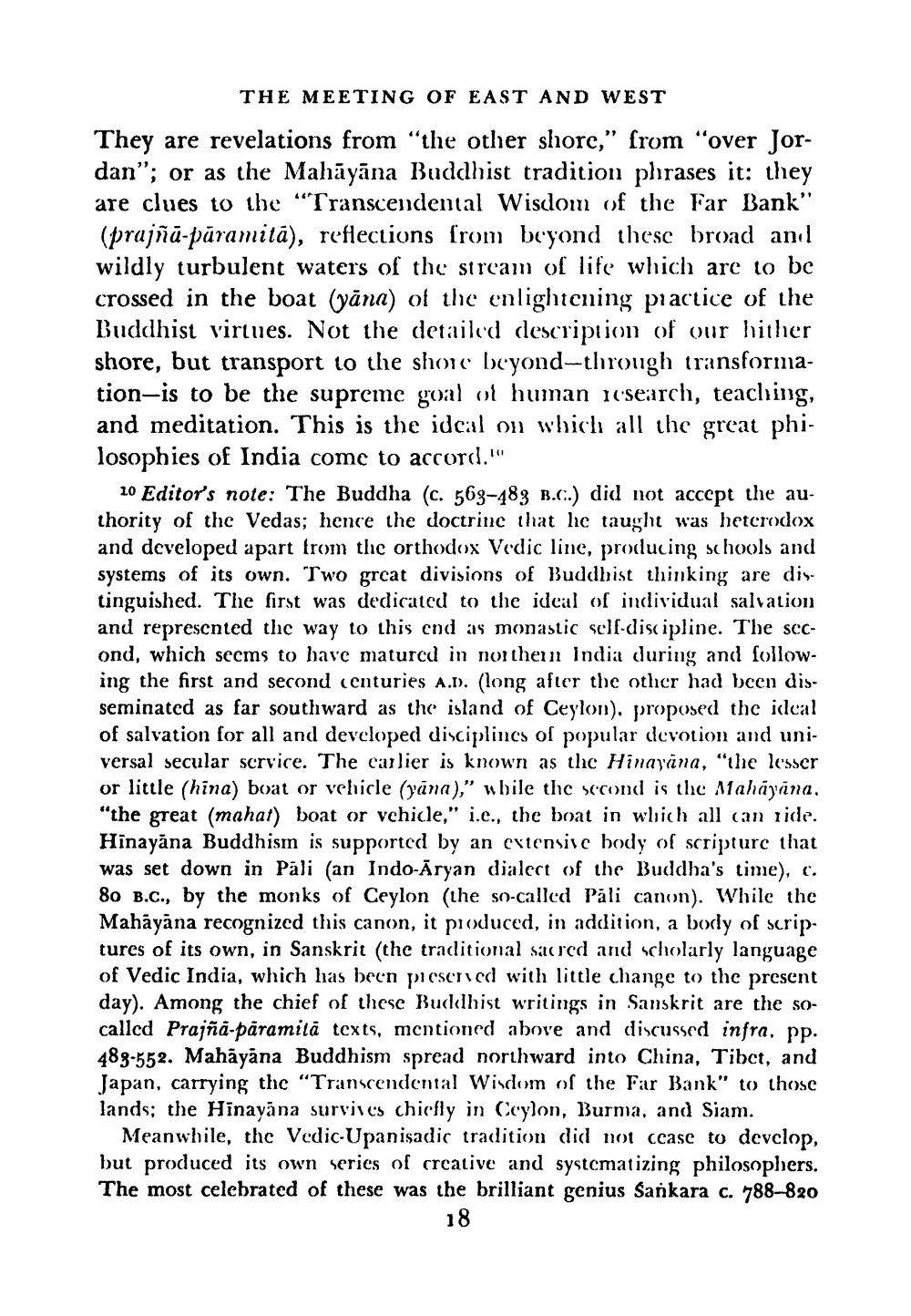________________
THE MEETING OF EAST AND WEST
They are revelations from “the other shore," from "over Jordan"; or as the Mahāyāna Buddhist tradition phrases it: they are clues to the “Transcendental Wisdom of the Far Bank"
(prajñā-püramitā), reflections from beyond these broad and wildly turbulent waters of the stream of life which are to be crossed in the boat (yāna) of the enlightening practice of the Buddhist virtues. Not the detailed descripuion of our hither shore, but transport to the shore beyond-through transformation-is to be the supreme goal of human research, teaching, and meditation. This is the idcal on which all the great philosophies of India come to accord.""
10 Editor's note: The Buddha (c. 563-483 B.C.) did not accept the authority of the Vedas; hence the doctrine that he taught was heterodox and developed apart from thic orthodox Vedic line, producing schools and systems of its own. Two grcat divisions of Buddhist thinking are distinguished. The first was dedicated to the ideal of individual salvation and represented the way to this end as monastic self-discipline. The sccond, which seems to have matured in northern India during and following the first and second (cnturies A.D. (long after the other had been disseminated as far southward as the island of Ceylon), proposed the idlcal of salvation for all and developed disciplines of popular devotion and universal secular service. The earlier is known as the Hinayana, "the lesser or little (hina) boat or vehicle (yana)," while the second is the Afahayana, "the great (mahat) boat or vehicle," i.e., the boat in which all can ride. Hinayāna Buddhism is supported by an extensive body of scripture that was set down in Pali (an Indo-Aryan dialect of the Buddha's time), c. 80 B.C., by the monks of Ceylon (the so-called Pāli canon). While the Mahayana recognized this canon, it produced, in addition, a body of scriptures of its own, in Sanskrit (the traditional sacred and scholarly language of Vedic India, which has been prescried with little change to the present day). Among the chief of these Buddhist writings in Sanskrit are the socallcd Prajña-paramitā texts, mentioned above and discussed infra, pp. 488-552. Mahayana Buddhism spread northward into China, Tibet, and Japan, carrying the “Transcendental Wisdom of the Far Bank" to those lands; the Hinayāna survives chiefly in Ceylon, Burma, and Siam.
Meanwhile, thc Vedic Upanisadic tradition did not cease to develop, but produced its own series of creative and systematizing philosophers. The most celebrated of these was the brilliant genius Sankara c. 788-820
18




